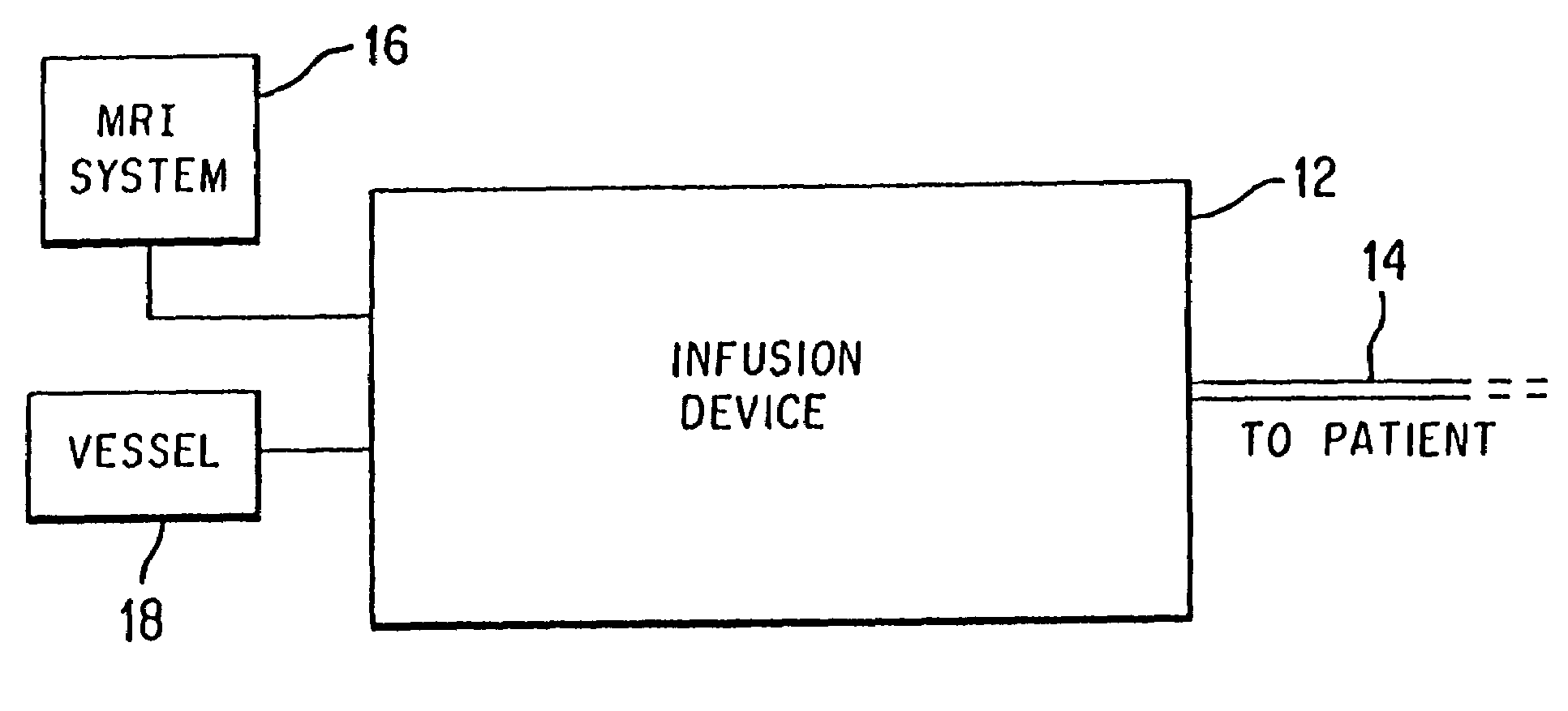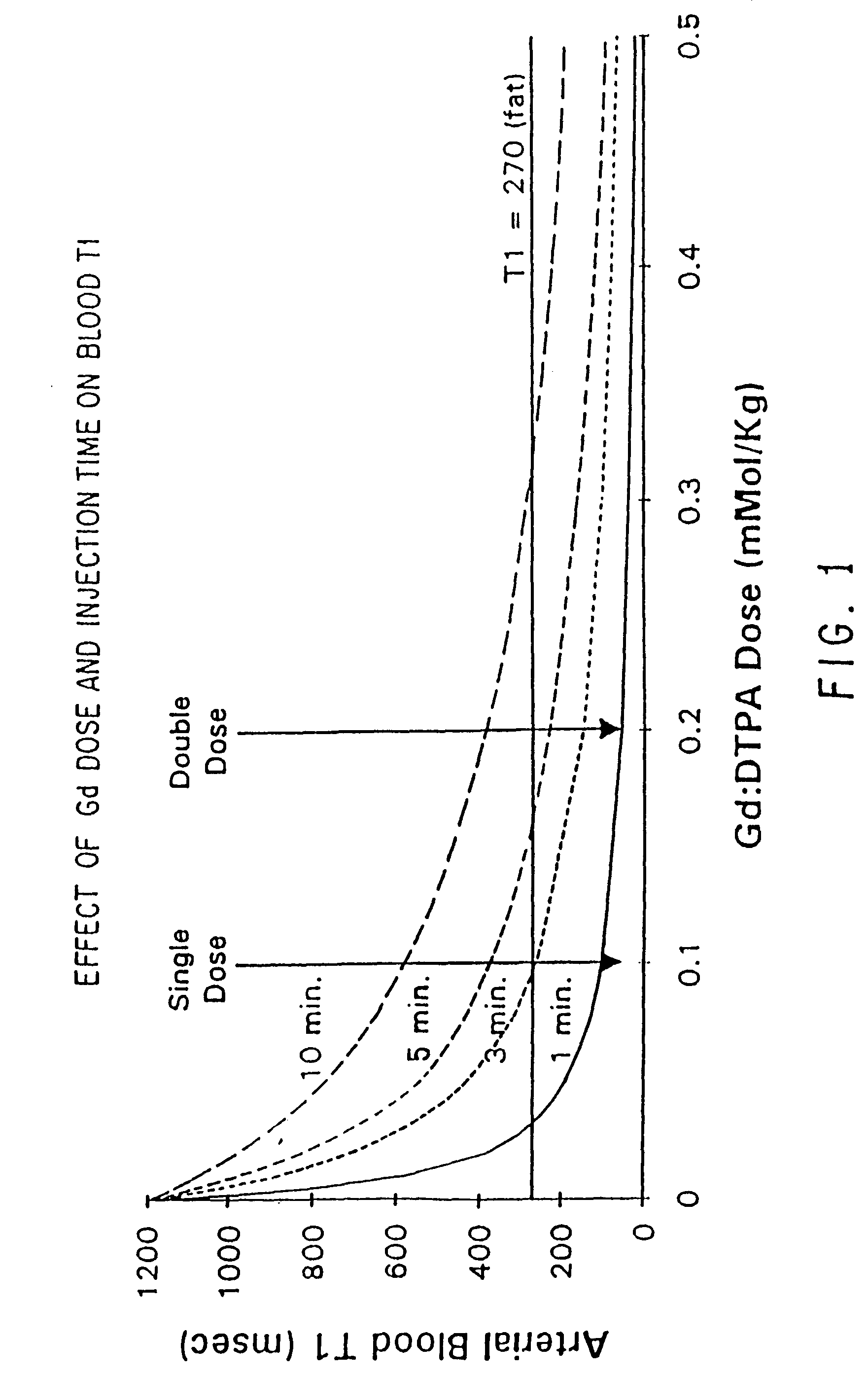Method for imaging an artery using a magnetic resonance contrast agent
a magnetic resonance contrast agent and imaging method technology, applied in the direction of magnetic variable regulation, angiography, instruments, etc., can solve the problems of thrombosis, thrombosis, thrombosis, etc., to reduce flow artifacts, reduce the risk of arterial injury or damage, and the contrast level in the arteries is higher.
- Summary
- Abstract
- Description
- Claims
- Application Information
AI Technical Summary
Benefits of technology
Problems solved by technology
Method used
Image
Examples
example 1
[0176]Contrast between peripheral arteries and veins in images obtained by imaging dynamically during the administration of gadopentetate dimeglumine was investigated in sixteen patients referred for aorta-iliac magnetic resonance arteriography. These included 9 males and 7 females with a mean age of 72 ranging from 67 to 83. The indications for the study included hypertension (6), abdominal aortic aneurysm (AAA, 6) claudication (4) and renal failure (9). Some patients had more than one indication.
Parameters
[0177]All imaging was performed on a 1.5 Tesla superconducting magnet (General Electric Medical Systems, Milwaukee, Wis.) using the body coil and version 4.7 software. A 3D FT, coronal, spoiled, gradient echo volume was acquired centered on the mid-abdomen. The imaging parameters included: 12 cm volume with 60 partitions, 2 mm partition thickness, TR of 2.5 msec, a TE of 6.9 msec, a flip angle of 40°, first order flow compensation, 36 centimeters field of view, 256 by 192 matrix....
example 2
[0185]In order to determine the optimal timing of contrast administration, two methods of dynamic administration, bolus and continuous infusion, were compared to non-dynamic injections and to conventional time-of-flight imaging.
[0186]Gadolinium enhanced magnetic resonance arteriography was performed in 52 patients referred for routine MRA of the abdominal aorta or branch vessels. Imaging was performed as described in Example 1. The total acquisition time was 5:08 minutes to cover approximately 36 cm of aorta and iliac artery in the superior to inferior dimension. In 20 of these patients, the dynamic gadolinium infusion imaging was performed with 28 partitions each 2 mm thick with a 256 by 256 matrix to reduce the scan time to 3:18 minutes.
[0187]After pre-scanning, venous access was obtained via a 22 gauge angiocatheter. A dynamic acquisition was then performed during hand injection of gadopentetate dimeglumine (Berlex Laboratories, Cedar Knoll, N.J.) 0.2 millimoles / Kg. In 12 patient...
example 3
[0196]MRA image data for a patient presenting with an abdominal aortic aneurysm was acquired as described in Example 1. MRA images are shown in FIGS. 10A and 10B.
[0197]The MRA of FIG. 10A depicts the aneurysmal aorta and aneurysmal common iliac arteries as well as severe stenoses of the right external iliac (curved arrow) and inferior mesenteric (straight arrow) arteries and a mild stenosis of the left common iliac artery. The internal iliac arteries are excluded because of their posterior course. FIG. 10B illustrates a digital subtraction angiogram which confirms the findings in FIG. 10A as discussed immediately above.
PUM
 Login to View More
Login to View More Abstract
Description
Claims
Application Information
 Login to View More
Login to View More - R&D
- Intellectual Property
- Life Sciences
- Materials
- Tech Scout
- Unparalleled Data Quality
- Higher Quality Content
- 60% Fewer Hallucinations
Browse by: Latest US Patents, China's latest patents, Technical Efficacy Thesaurus, Application Domain, Technology Topic, Popular Technical Reports.
© 2025 PatSnap. All rights reserved.Legal|Privacy policy|Modern Slavery Act Transparency Statement|Sitemap|About US| Contact US: help@patsnap.com



